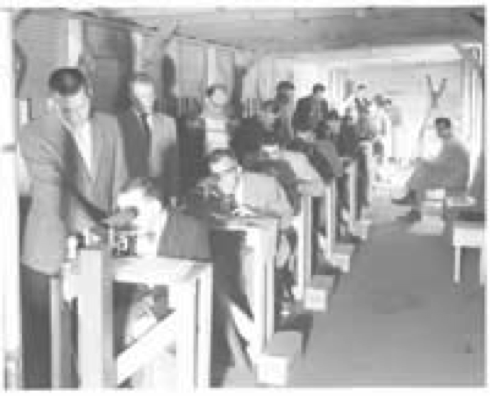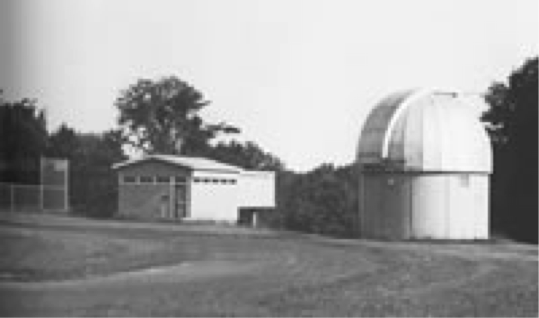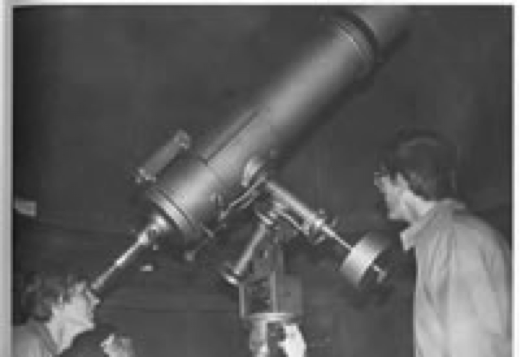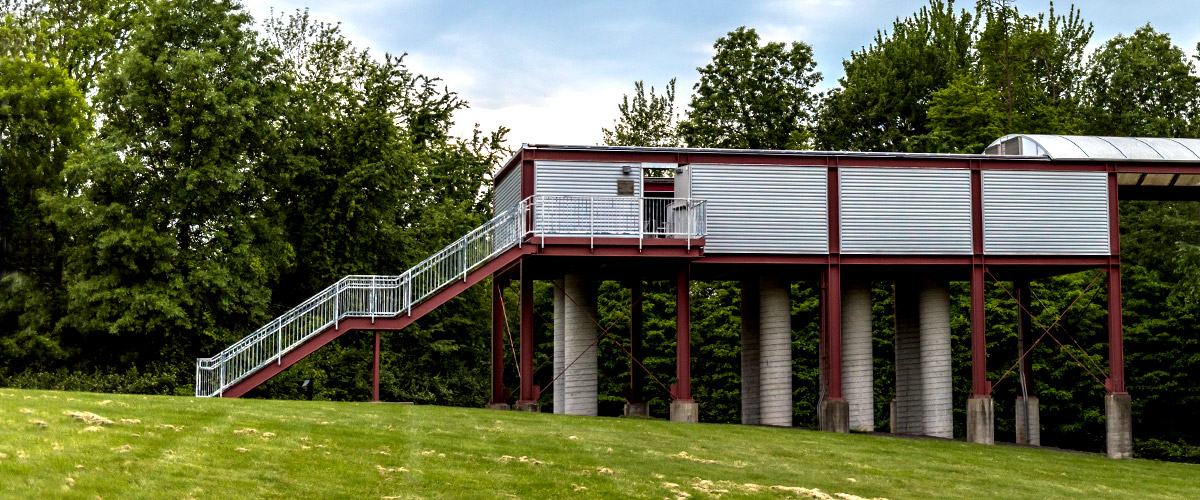Launch of the Soviet Union’s Sputnik satellite in 1957 guided people’s eyes toward the nighttime sky. Within a short time, many satellites were in earth’s orbit and the U.S. space agency was working with amateurs to monitor the objects visually.
These Moonwatch observers used small telescopes to monitor satellites. An active and successful Moonwatch club emerged in Terre Haute operated by the Terre Haute Astronomical Society. The group operated out of a garage at Allis-Chalmers, a local manufacturing company, for its first three years. In 1960, the group approached Rose Polytechnic Institute about hosting the Moonwatch program.

The Terre Haute astronomical Society Moonwatch station at Allis-Chalmers circa 1959.
The Rose Poly Board of Managers responded positively to the request and, thanks to a large gift from the Estate of Lynn Reeder, a 1915 civil engineering alumnus, soon had the money needed to build what would become the Lynn H. Reeder laboratory and observatory. The facility was on the west side of campus and operated until its demolition in 2000.

The Reeder Lab and the observatory as they appeared from about 1973 until they were demolished in April of 2000.
A 1988 campus master plan called for the elimination of the Reeder Lab. However, thanks to the efforts of Professor Richard Ditteon, the Student Government Association, generous alumni and others, astronomy gained in popularity and strength at Rose-Hulman in the 1990s. Improved equipment made doing research much easier and soon it was hoped a new location for the observatory could be found—far from the lights of new residence halls being constructed on the west side of campus.

A Fecker telescope in use at the Reeder Lab and Observatory. Photo from the 1978 Modulus.
- A generous gift of $500,000 from the Oakley Foundation made the Oakley Observatory possible. Ground was broken for the new facility in 1999 far from the campus lights. Near the observatory is a new Lynn Reeder lab, which provides classroom space, a computer lab, kitchen and restroom.
- Rose-Hulman is proud of the important research work taking place in the Oakley Observatory. Many previously unidentified asteroids have been documented from its telescopes. We are also pleased to host star parties for the local community and local K-12 students.
- Download the complete history of the Rose-Hulman Oakley Observatory, as written by Professor Richard Ditteon.



